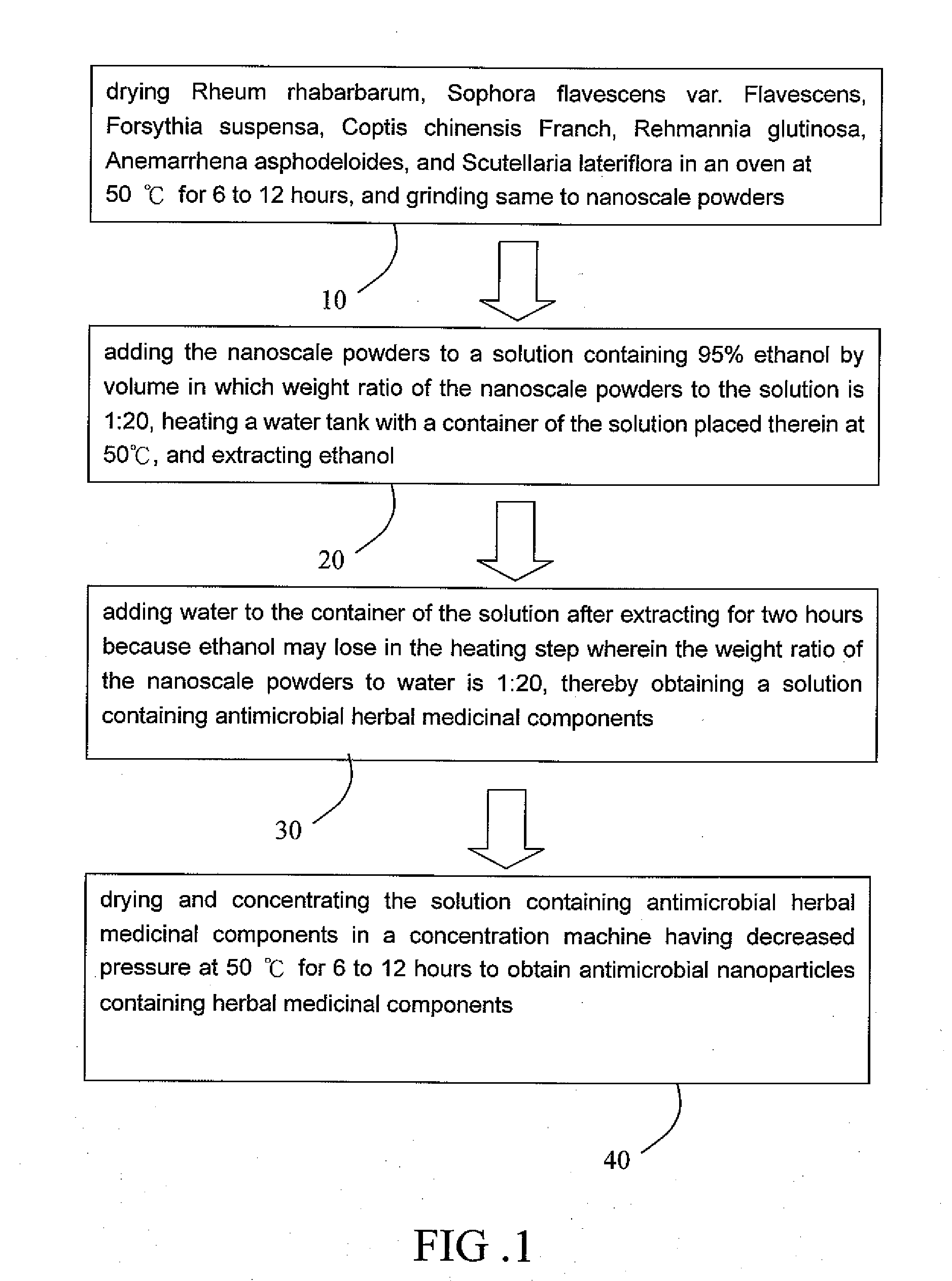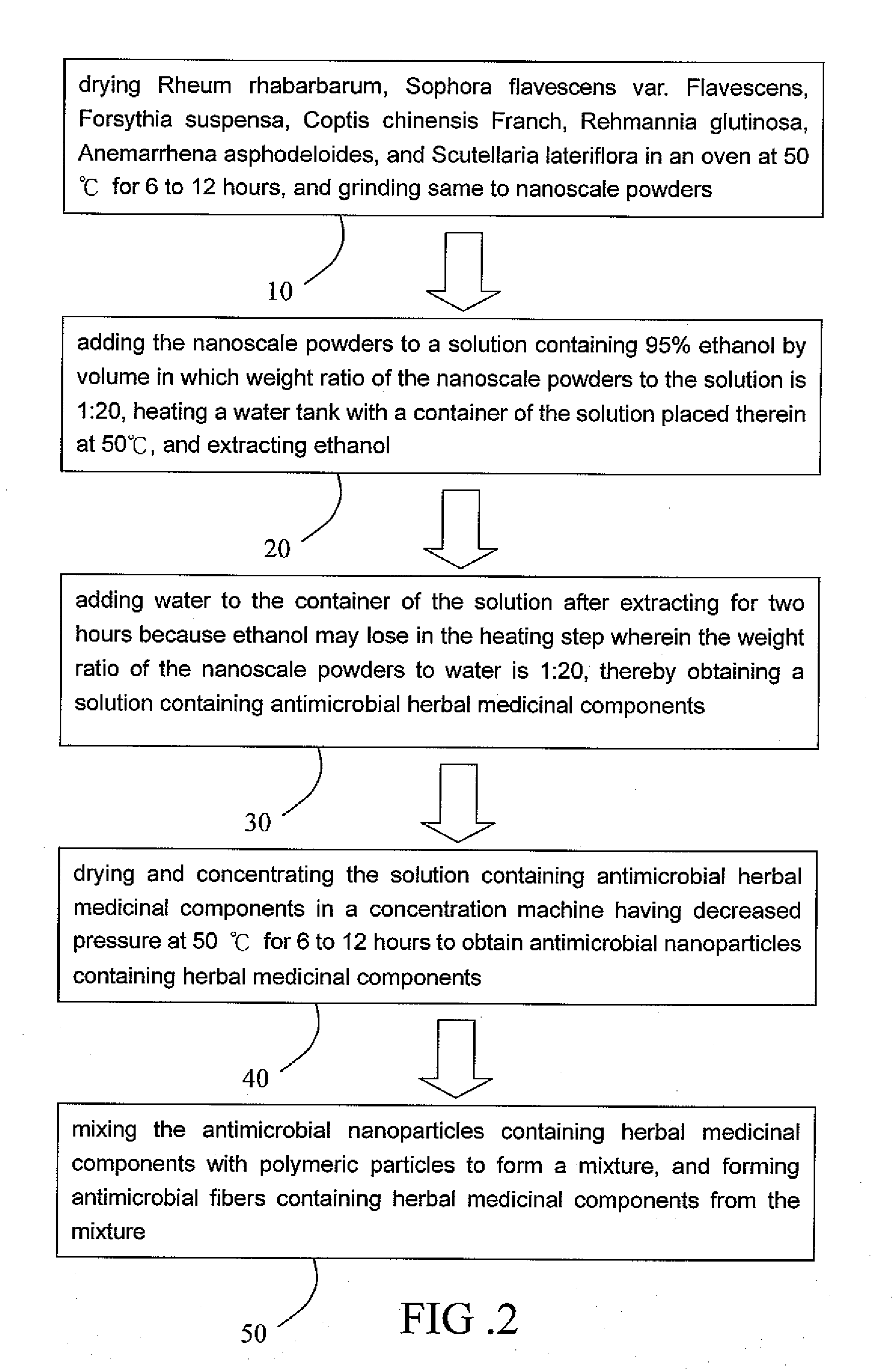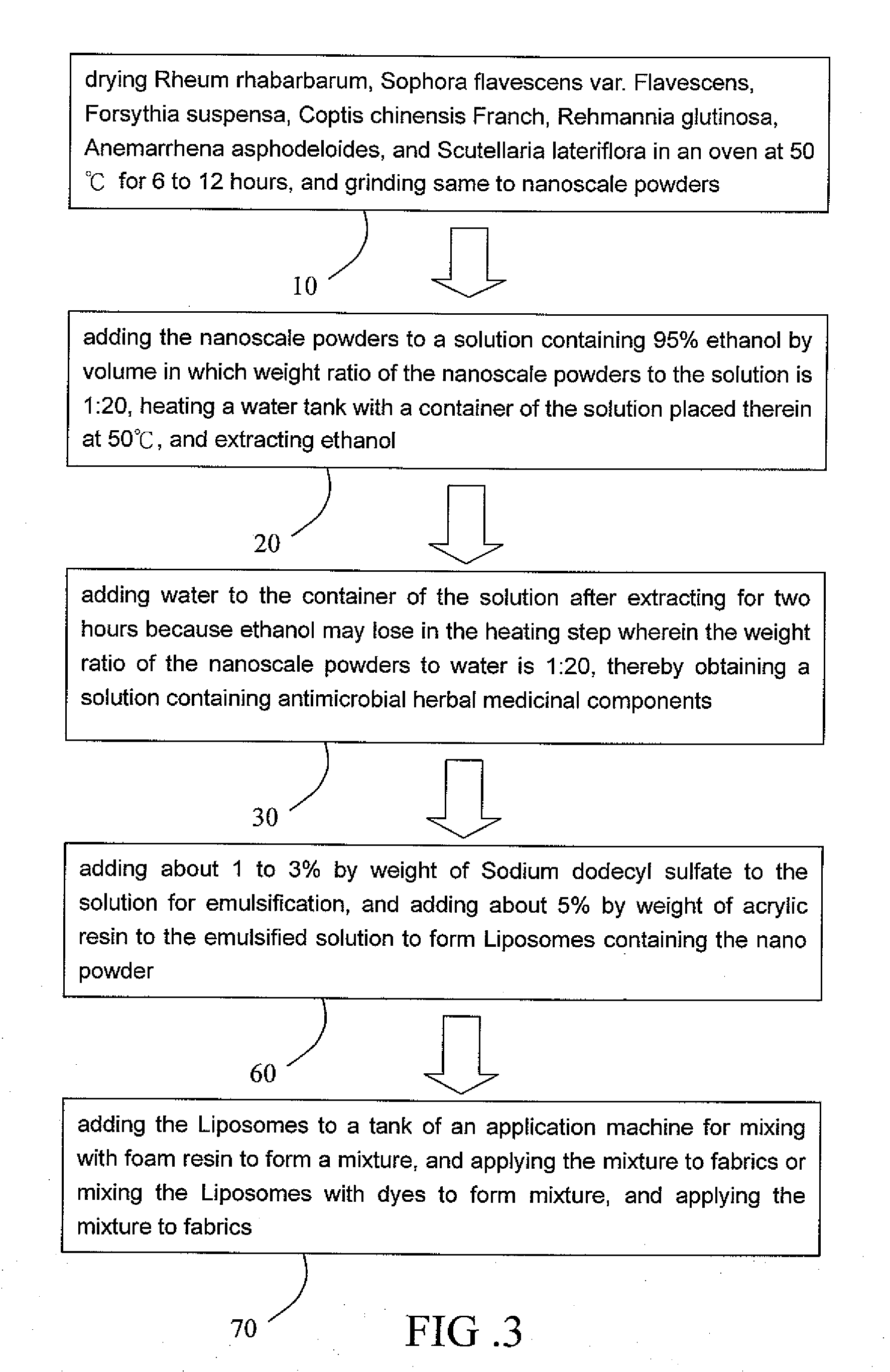Process of Manufacturing Antimicrobial Fabrics
a technology of antimicrobial fabrics and fabrics, applied in the field of antimicrobial fabrics, can solve problems such as health hazards of metal components
- Summary
- Abstract
- Description
- Claims
- Application Information
AI Technical Summary
Benefits of technology
Problems solved by technology
Method used
Image
Examples
Embodiment Construction
[0015]Referring to FIG. 1, a flow chart of a process of manufacturing antimicrobial nanoparticles containing herbal medicinal components according to the invention is illustrated.
[0016]The process comprises:
[0017]Step 10 of drying Rheum rhabarbarum, Sophora flavescens var. Flavescens, Forsythia suspensa, Coptis chinensis Franch, Rehmannia glutinosa, Anemarrhena asphodeloides, and Scutellaria lateriflora in an oven at 50° C. for 6 to 12 hours, and grinding same to nanoscale powders.
[0018]Step 20 of adding the nanoscale powders to a solution containing 95% ethanol by volume in which weight ratio of the nanoscale powders to the solution is 1:20, heating a water tank with a container of the solution placed therein at 50° C., and extracting ethanol.
[0019]Step 30 of adding water to the container of the solution after extracting for two hours. This is because ethanol may lose in the heating step. As such, the weight ratio of the nanoscale powders to water is maintained at 1:20. As a result...
PUM
 Login to View More
Login to View More Abstract
Description
Claims
Application Information
 Login to View More
Login to View More - R&D
- Intellectual Property
- Life Sciences
- Materials
- Tech Scout
- Unparalleled Data Quality
- Higher Quality Content
- 60% Fewer Hallucinations
Browse by: Latest US Patents, China's latest patents, Technical Efficacy Thesaurus, Application Domain, Technology Topic, Popular Technical Reports.
© 2025 PatSnap. All rights reserved.Legal|Privacy policy|Modern Slavery Act Transparency Statement|Sitemap|About US| Contact US: help@patsnap.com



